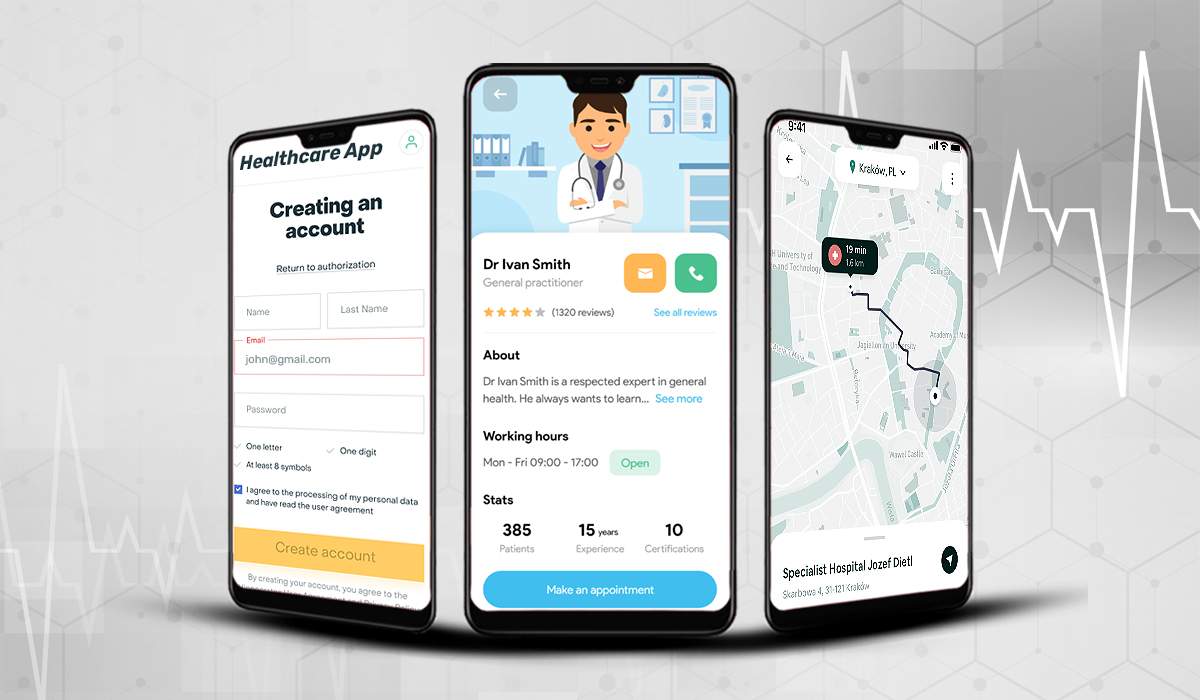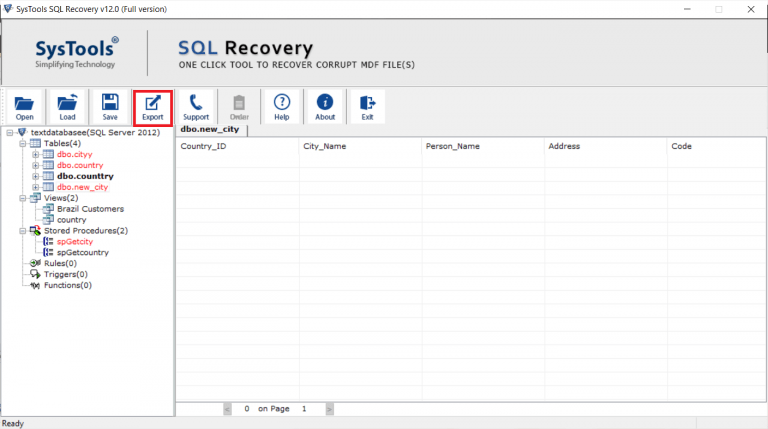
10 Essential Features for a Healthcare App
The global mHealth app market size was valued at USD 40.05 billion in 2020 and is expected to grow at a compound annual growth rate (CAGR) of 17.7% from 2021 to 2028” (source: Grand View Research). The outbreak of COVID-19 further highlighted the requirement of healthcare apps. No wonder that in today’s age of “social distancing” and “neo-normal”, the demand for healthcare apps will only continue to rise. If you want to create a mobile healthcare app, this is a high time to invest.
Here is a complete list of the features you should integrate into a healthcare app to enhance the convenience of the patients. We know integrating these features may be challenging if you are not a tech expert. Consider engaging professional mobile app development services to build an innovative and user-friendly healthcare application. Without any delay, let’s get into it then.
Must-Have Features for a Healthcare App
User Registration
Enable the users to create a profile without any hassle. Easy signup/login is the first step for that. Allow people to register with personal information like name, contact details, email ID, etc.
Don’t complicate the login process. It should be click-and-go. Remember, a healthcare app can be used during an urgency. Therefore, fewer steps are more appreciated.
Registration with OTP verification of the phone number is the best way to go. You can also allow the users to log in with their social media account.
Search Feature & Map
A search functionality is a must-have in a healthcare app. It will allow the patients to look for a specific doctor, a specific category of treatment, etc. It can also facilitate location-oriented clinic/hospital search. You can also enable auto-completion and suggestions to enhance users’ convenience.
Adding a map API and allowing the patients to pinpoint the location of the clinic takes user experience to the next level. For this, your app may track the phone’s GPS and show a direction – just as Google Maps does.
Doctors’ Details
Allow the patients to learn all about the doctors. The patients may be interested to know their specialization, experience, official contact number, reviews, consultation fee, and where they practise physically. A healthcare app should provide all the information so that the patients can make an informed decision.
Telemedicine
Telemedicine does not only enhance people’s convenience; the outbreak of pandemic has seen the dire necessity of telemedicine as it allows people to consult the doctors without rushing to the clinics. The global telemedicine market was valued at USD 27.04 billion in 2019 and is expected to reach USD 181.81 billion by 2026 (source: medgagdget).
The mHealth app should enable the patients to choose an available doctor, select a convenient slot, receive an e-visit confirmation, make a voice or video call, etc. Many apps offer photo-based consultation and allow the patients to share images with the doctors. This is ideal for treatments of bruises, skin problems, external injuries, etc.
The experts of a reputed mobile app development company recommend using WebRTC or cloud infrastructure that powers real-time text, video, and audio.
E-Prescription
While several healthcare apps still rely on uploading the images of handwritten prescriptions by the doctors, e-prescriptions are gradually coming to the forefront and advanced applications are integrating this feature.
E-prescriptions can offer a detailed view of the patients’ medical history. It can generate a complete medication list along with the dosage. It also has a built-in pharmacy feature to show nearby pharmacies from where the patients can buy the drug.
Reminder
There are numerous healthcare apps available in the market. Why should one opt for your app?
They will use your app if it offers a 360-degree service. Your app should have everything that a patient finds useful. The reminder is a part of it. Based on the e-prescription, the app should remind the users to regularly take pills, book the next appointment, and thereby take care of the patients’ wellness.
You can also allow the patients to craft their own schedules. Further, they can mark the medicines they have already consumed. This will help them to keep track. It is particularly useful for patients who need to consume multiple medicines at regular intervals.
Payment Gateway
Integrating secured payment gateways into your app will allow the patients to easily pay the consultation fees. You should integrate multiple payment modes such as digital wallets, net banking, credit/debit cards, etc.
Make sure that the bills can be downloaded or shared for documentation purposes.
Push Notification
We have already discussed Reminders – a form of push notification. You can also send other push notifications from your app. It may include the latest medical news that a patient may find useful, steps to prevent contamination, how to obtain a vaccine, and so on. It will further improve your app’s usability.
Bear in mind to personalize the push notifications. If a patient uses your app mainly for cardiac treatment, you may not send a push notification to the person for dandruff treatment. The more personalized a push notification is, the more people will interact with your app.
Fitness Tracker
As we pointed out earlier, the more the merrier is the bottom-line for the usability of a healthcare application. If you want to increase your audience base, it’s better to offer a solution for everyone. Enable them to track calorie burn, check the height-weight chart, get diet tips, access exercise routines, and so on.
Here, you can leverage gamification to celebrate the users’ success (say, following diet tips for a month, losing a certain weight, etc.) to enhance user engagement.
Information & Guideline
The web is filled with lots of irrelevant medical information. It only misguides people instead of offering valuable insights. If possible, you can include relevant medical advice from trusted sources in your app. It will spread awareness and help the patients. From medical news to fitness guidelines – you can share it all. However, maintaining a trusted source is the key here.
Wrapping Up
Healthcare apps are widely used these days for remote diagnosing, personal wellness, and medical advice. Integrating the above-mentioned features will enhance your app’s user-friendliness and user engagement. Try these and thank us later!
Also Read: 7 Reasons To Have Custom Mobile App
















